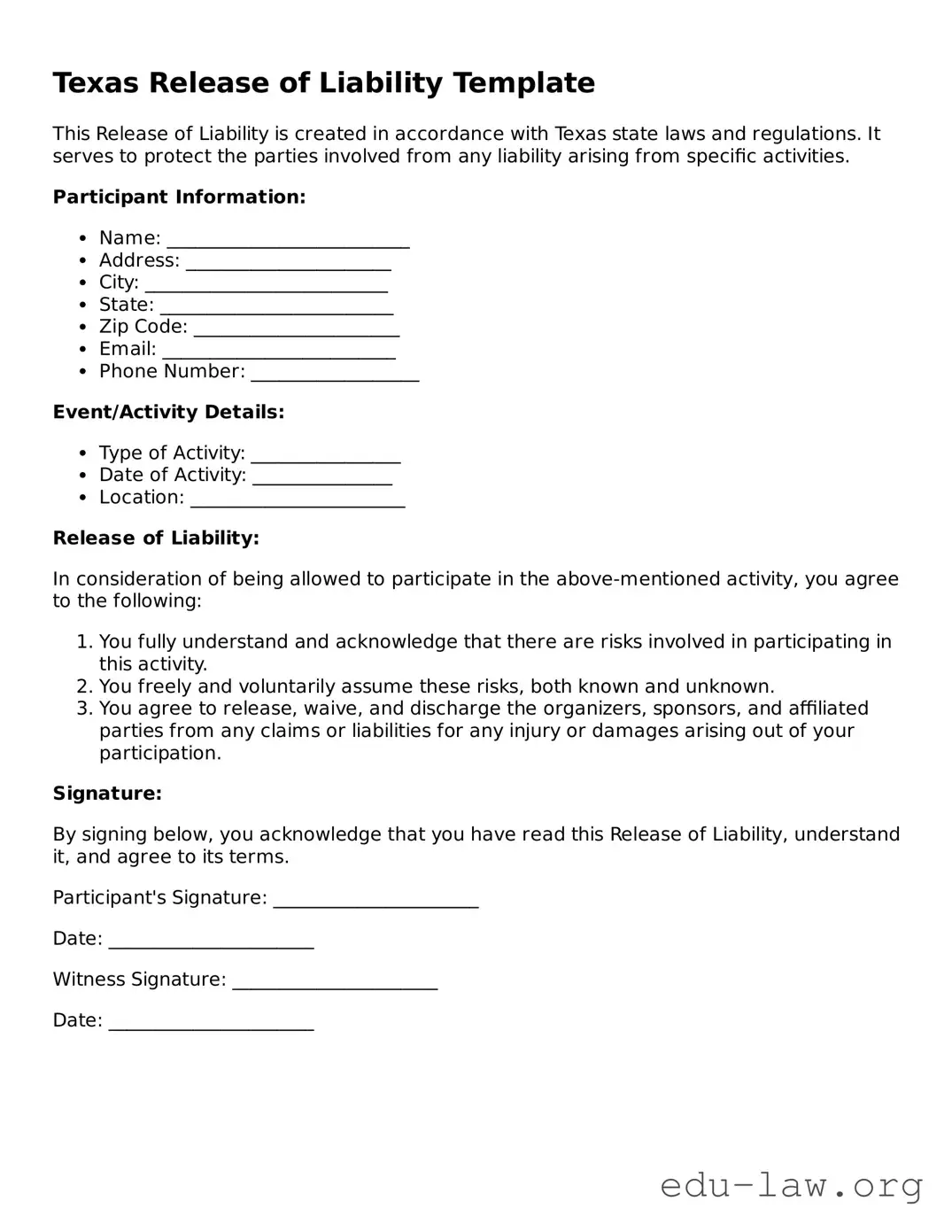What is a Texas Release of Liability form?
A Texas Release of Liability form is a legal document that allows one party to waive their right to hold another party responsible for injuries or damages that may occur during a specific activity or event. This form is often used in activities that have inherent risks, such as sports, recreational activities, or events where participants may be exposed to potential dangers.
Why should I use a Release of Liability form?
Using a Release of Liability form helps protect you from lawsuits. If someone gets injured while participating in an event or activity you organized, this form can limit your liability. Participants acknowledge that they understand the risks and agree not to hold you accountable for accidents that may occur.
Who should sign the Release of Liability form?
Anyone who will be participating in an activity that carries risk should sign the form. This includes adults, minors, and sometimes a parent or guardian must sign on behalf of a minor. Make sure everyone involved is aware of the risks before signing.
Is a Release of Liability form legally binding in Texas?
Yes, a properly executed Release of Liability form can be legally binding in Texas, as long as it meets certain requirements. The form should be clear, specific, and unambiguous. However, some situations may limit its enforceability, especially where gross negligence or intentional harm is involved.
How do I create a valid Release of Liability form?
Creating a valid Release of Liability form involves including specific information. The form should contain the names of the parties involved, a description of the activity, an explanation of the risks, and a statement where participants waive their rights. It’s wise to consult with a legal professional to ensure your form is properly formatted and complies with Texas laws.
Can I be held liable if someone ignores the Release of Liability?
While the Release of Liability form provides a level of protection, it does not guarantee immunity from all claims. If there is evidence of gross negligence or intentional harm, a court may still hold you liable. The form helps mitigate risks but does not eliminate them entirely.
Where should I keep the signed Release of Liability forms?
It’s important to keep the signed forms in a safe, organized location. Having them stored electronically and in hard copy is a good practice. Ensure that they are readily accessible in case of any disputes or claims related to the activity.
